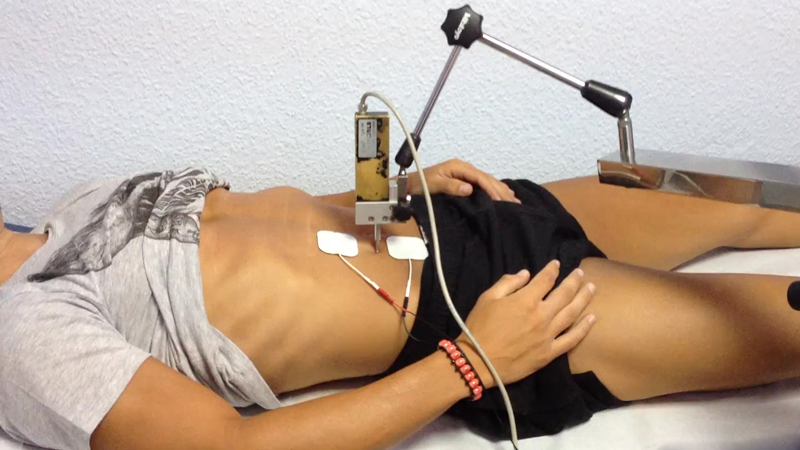
By Matthew Buckley, TMG Body Evolution
The field of muscle diagnostics has a long history of providing valuable, objective information for use in risk management, injury diagnosis and muscle composition data. Ultrasound Imaging, MRI, and EMG have laid the foundation for the modern use of these diagnostic devices in sport performance. In the analytics era, data is more important than ever. Sports professionals are now searching for new and more valuable technologies for use diagnosing and monitoring athletes. After all, information is knowledge and knowledge is power.
When athletes get injured, they, the team, the coach, and the organization all suffer. Currently, diagnostic technologies can assess either reliably or with applicable results, not both. This lack of both reliable AND applicable information leads to a weakness in current athlete assessment strategies. To bridge this information gap, many professional clubs and athletes around the world are using a technical procedure called Tensiomyography, providing immediate and diagnosis of specific muscle performance.
During conversations about Tensiomyography with elite athletes and sports therapy professionals from Europe and North America the consensus is clear that Europe is currently making great advances in sport technology and its use. Having an already established European foundation of development, research, and application, Tensiomyography is able to help athletes immediately in North America.
For athletes, performance determines success. Objective information is of utmost importance when assessing an athlete. With the implementation of Tensiomyography into athlete testing, we can successfully monitor muscle responses during different training and competition conditions. The data obtained can be immediately assessed for imbalances, deficiencies, and recommendations as well as compared over time to assess trends in training and performance.
Data obtained describes five unique muscle contraction parameters.
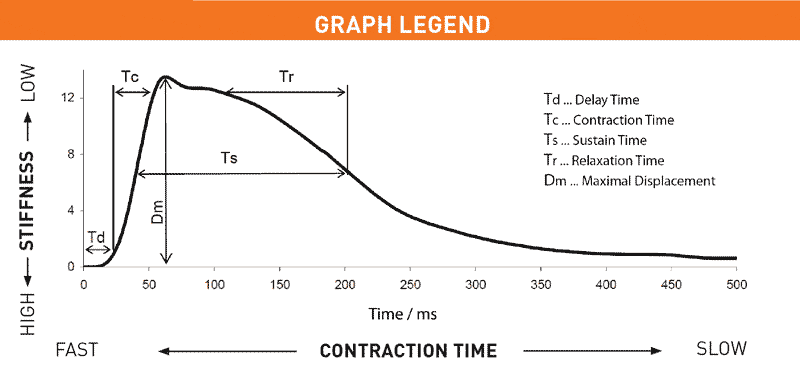
Figure 1: Contraction Time vs Stiffness.
These unique parameters provide important information about muscle performance and composition.
Benefits of Tensiomyography
- Sports Medicine Therapists and Practitioners
- Testing is simple, fast and non-invasive.
- Portable system – use in clinic or remote location.
- Real time TMG reports – acquire valuable muscle performance information based on the athlete’s unique muscle characteristics and contractile properties.
- Obtain objective, quantitative data to validate and compliment in-clinic assessments and training to better serve athletes.
- Competitive differentiator.
- New ongoing revenue stream.
- Athletes
- Improve athletic performance.
- Understand specific muscle performance strengths, weaknesses and deficiencies.
- Obtain information on muscle activation patterns, symmetry and synchronization.
- Optimize training based on specific muscle characteristics.
- Decrease injury risk.
- Rehab faster from sport injuries.
- Gain competitive edge.
System Components
The TMG system has four main components, which can be charged during non-use enabling complete portability!
- Electrical Stimulator
- Digital Sensor
- Tripod and Manipulating Hand
- Electrodes
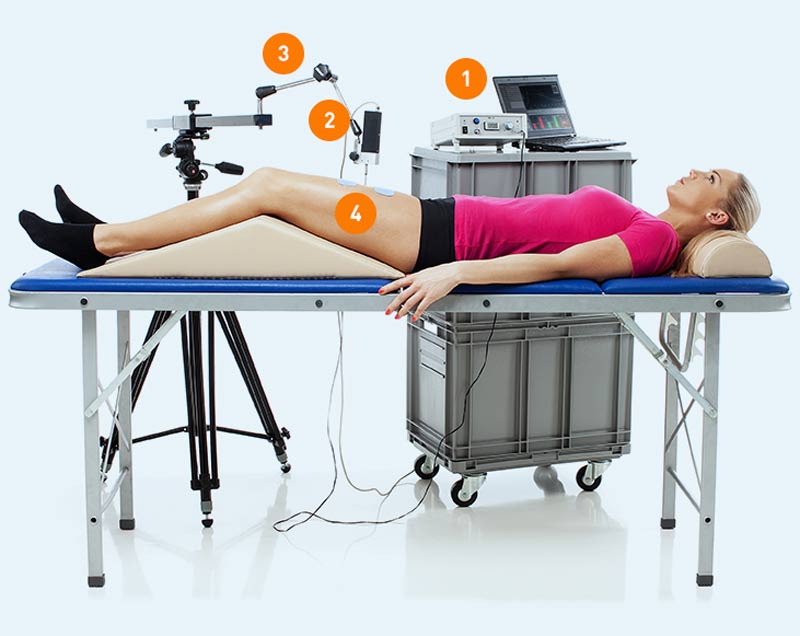
Figure 2: System components include electrical stimulator, digital sensor, tripod and manipulating hand, and electrodes.
Testing is completely non-invasive and takes between 5 and 45 minutes depending on the number of muscles tested. To begin, an athlete positions themselves sitting or lying on one side, on the back or the front, depending on the muscle being tested. The athlete’s joints are put in natural physiognomic position so they are not activated. Electrodes are placed to stimulate the desired skeletal muscle and are symmetric to sensor 50 – 60 mm from measuring point. The sensor is placed perpendicular to the muscle action and depressed into the skin on the muscle belly. Positioning of the sensor is performed in voluntary contracted or electrically stimulated muscle by palpation. The muscle is stimulated and as the contraction occurs the sensor takes in the data.
Development of Tensiomyography
Tensiomyography™ was developed in the 1990s in order to perform non-invasive muscle evaluation on deficient muscle. With coordinated efforts from Universities across Europe, the technology was able to garner use and notoriety among musculoskeletal science researchers. Tensiomyography was now firmly rooted in the scientific field and after independent research was published further exploration into the sporting realm began. In scientific studies that investigated Tensiomyography’s use in sport application, professionals noted the following as the main strengths: simplicity, flexibility and compatibility with other methods and applications, on or off the field.
Modern Innovations
After experiencing success in the sport application field, TMG began developing sport-specific assessment software in order to provide this much-needed technology the field of athlete optimization. The software immediately provides report creation (4 different types) as well as muscle by muscle interpretations based on the data obtained. Athletes are now informed if a muscle is tight, weak or slow by comparing their TMG results to reliable reference measurement data. This reference comparison can be individual and sport-specific. Currently over 20,000 athletes have been tested using Tensiomyography, allowing the establishment of “TMG Comparison Databases”. These databases allow athletes to compare their results to those of elite professional athletes by sport and position. These comparisons help to take the guessing game out of athletic training and performance allowing you to act on the quantifiable data.
Product Demonstration
The video below presents the product components and demonstrates how the system is used to evaluate the muscles of an athlete.
Training Story: The Kid Who Lifted Too Much, Too Soon
An elite youth basketball player is assessed before beginning a sport-specific workout program. The player then progresses through muscle development and sport-specific training, receiving assessments every 8-weeks. Prior to baseline testing, the athlete has no injury history leading to very symmetrical results.
After creating an appropriate base of strength, the athlete is instructed to use little or no weight during the exercises and to maintain focus on proper execution. Testing is then performed after the next 8-weeks, results show greatly diminished muscle symmetries. The athlete is asked about the program and routine including the progress of weight additions for each exercise. It is determined the athlete has added too much load to quickly to their body, creating compensations and muscle imbalance.
The athlete is advised to use a gradual loading program, staying with lower weights for longer in order to keep the exercise execution at a high level. The gradual loading program is performed for 8-weeks and again the athlete was re-tested. After changing the load and focus the athlete was able to train more optimally, and muscle symmetries improved. The athlete is still performing the adapted program with great success.
Rehab Story: The Million Dollar Return-to-play Decision
A top-ranking elite football player was injured during the season in one of the top European leagues. Re-injury occurred during the national championship 2 weeks after the initial injury. The player was immediately pulled from the game and a diagnosis was made: Grade I muscle injury on the myotendinous junction of the long head of the left biceps femoris associated with an interfascial hematoma between the long a short heads of the biceps femoris. The situation was even more critical as the re-injury happened in April, at the end of National and European league and before National Championships.
The TMG measurement was applied three times during the therapy to monitor therapy effectiveness as well as to provide the feedback information to optimize it.
Day 4 – After the injury Tensiomyography™ measurements confirmed the clinical evaluation and ultrasound diagnostics. The Tensiomyography™ measurements showed that the time the muscle needed to contract from a relaxed state was twice as long for the injured muscle when compared to the healthy muscle.
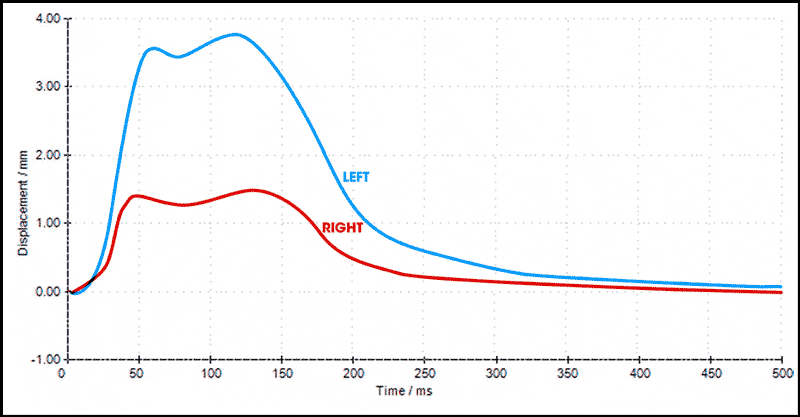
Figure 3: Day 4 right/left bicep femoris comparison.
Day 10 – The player was pain free and ultrasound was negative, however Tensiomyography™ showed a 27% asymmetry. Based on Tensiomyography™ findings the club kept the player off the field and prescribed targeted activation exercises for the injured muscle.
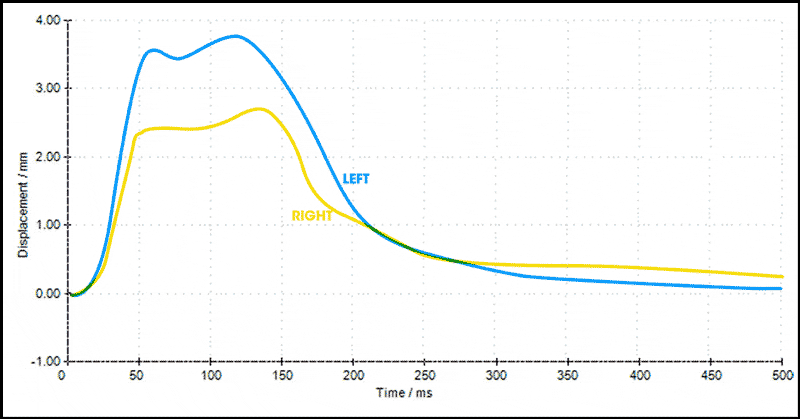
Figure 4: Day 10 right/left bicep femoris comparison.
Day 16 – TMG™ Athlete Muscle Performance measurements showed that the asymmetry was reduced and the player was activated. Approximately 10% is a generally acceptable level of asymmetry for a player to return to the field with minimal risk of re-injury.
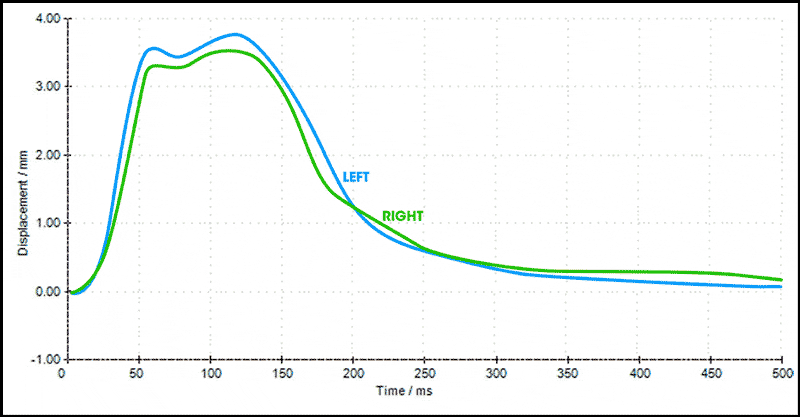
Figure 5: Day 16 right/left biceps femoris comparison.
The athlete was able to return to competition more efficiently and effectively with the addition of Tensiomyography and to this day has not experienced re-injury to the muscle.
Muscle Fatigue Story: Sprint Training Performance and Muscle Breakdown
The fastest growing use of Tensiomyography in the sporting field is testing local muscle fatigue. Using the portable and non-invasive nature of the testing to its potential allows individualized data to be obtained from fatigue testing. This data can inform coaches and trainers about specific muscle breakdown in an athlete, allowing individual program improvements to be made and diminishing injury risk from overtraining.
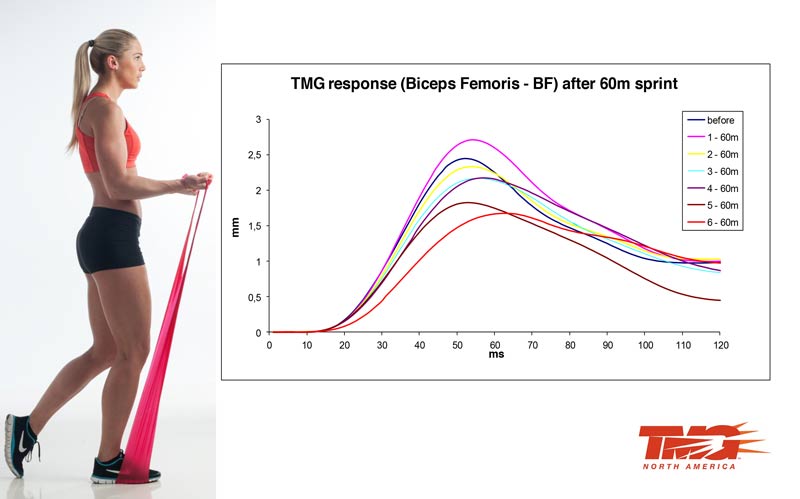
Figure 6: TMG response after 60 m sprints.
Having a base in the medical field means that Tensiomyography has a foundation in research articles exploring its use. Current areas of interest for the research include the effect of training on muscle composition, muscle fiber testing, monitoring athlete development and muscle fatigue testing.
TMG Summary Report
The newly developed report is able to provide an immediate reflection of the results obtained during the test. This colour-coordinated report designates optimal, average, and poor muscle responses and muscle symmetries.
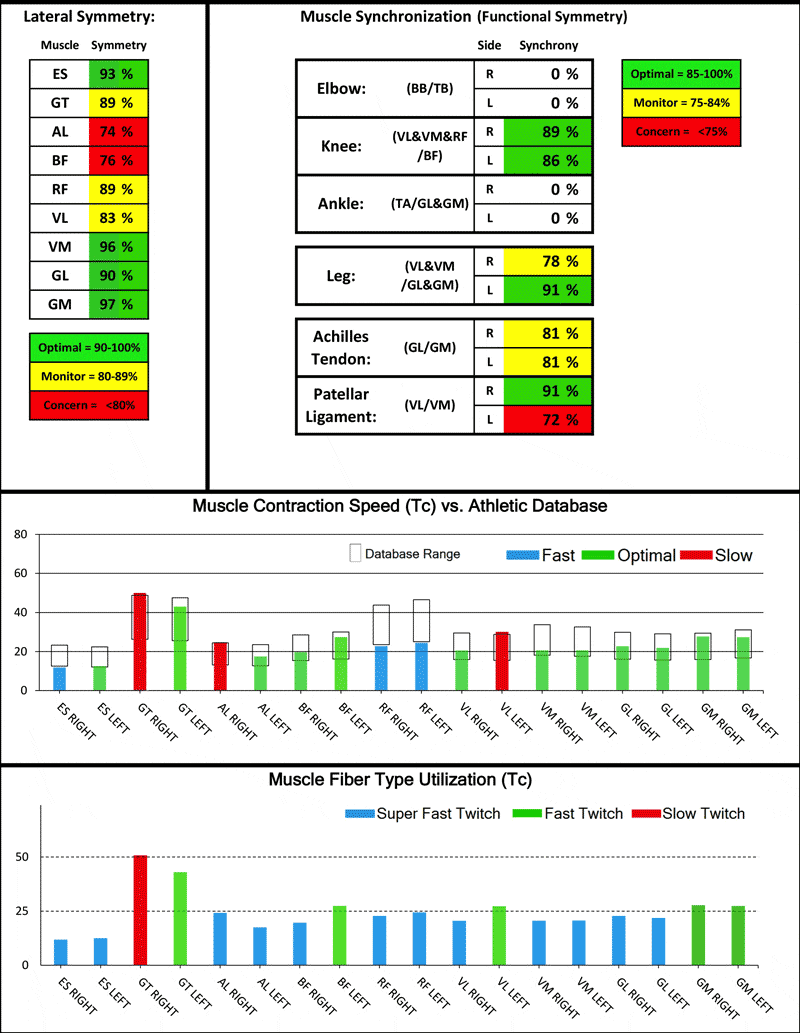
Figure 7: TMG Summary Report.
TMG Personal Comprehensive Report
Provides raw data and interpretations presented using graphs and comparison charts. This report is used in order to assess muscle responses and most importantly to provide individualized recommendations based on the data.
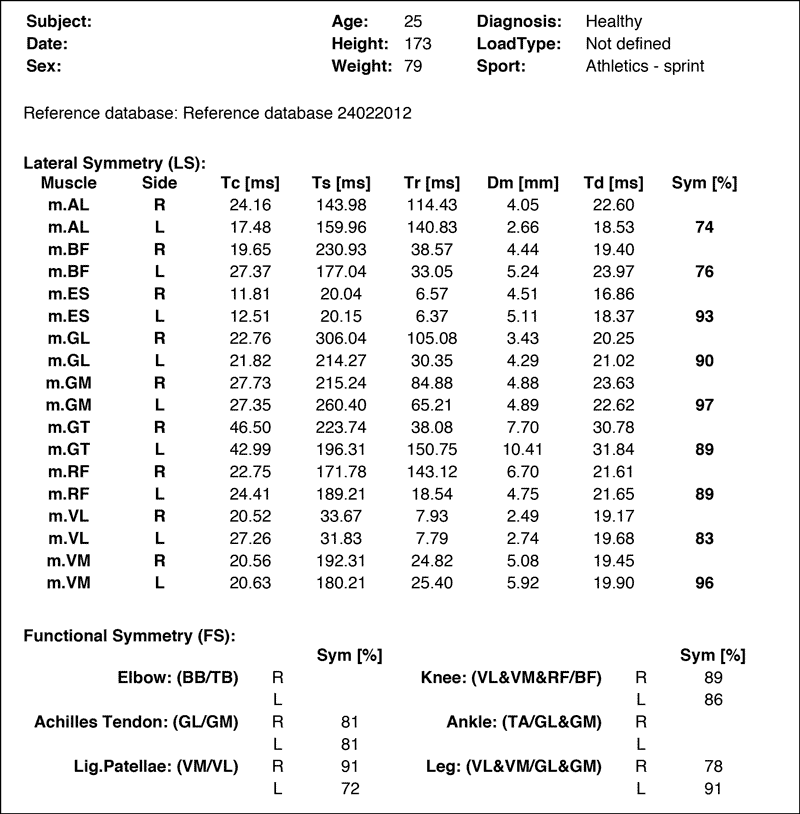
Figure 8: Sample Athlete Data.
TMG Trend Report
Provides analysis during longitudinal analysis of athlete muscle data. The report breaks down the progress for each specific muscle, and is used most often in the rehabilitation and player development setting.
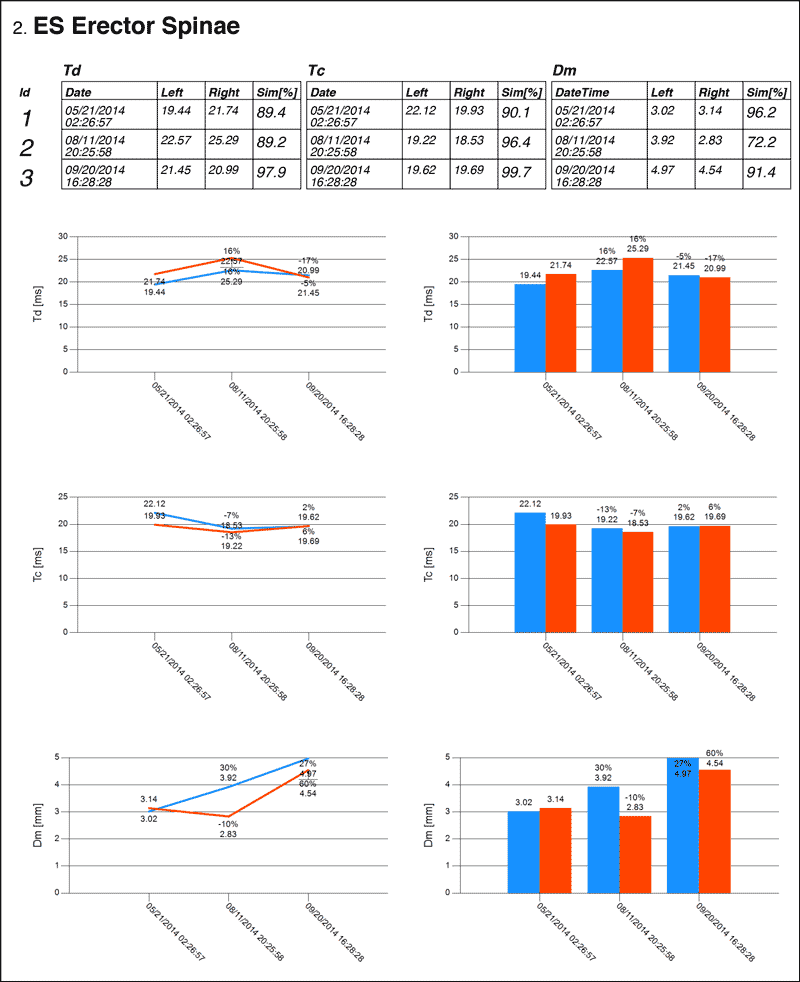
Figure 9: TMG Trend Report.
TMG Group Report
Provides direct team comparisons in order to assess current training and trends during the season. Popularly used to assess athlete periodization, more specifically how an athlete’s muscle performance changes during different parts of the year (e.g. pre-season vs. end of the season)
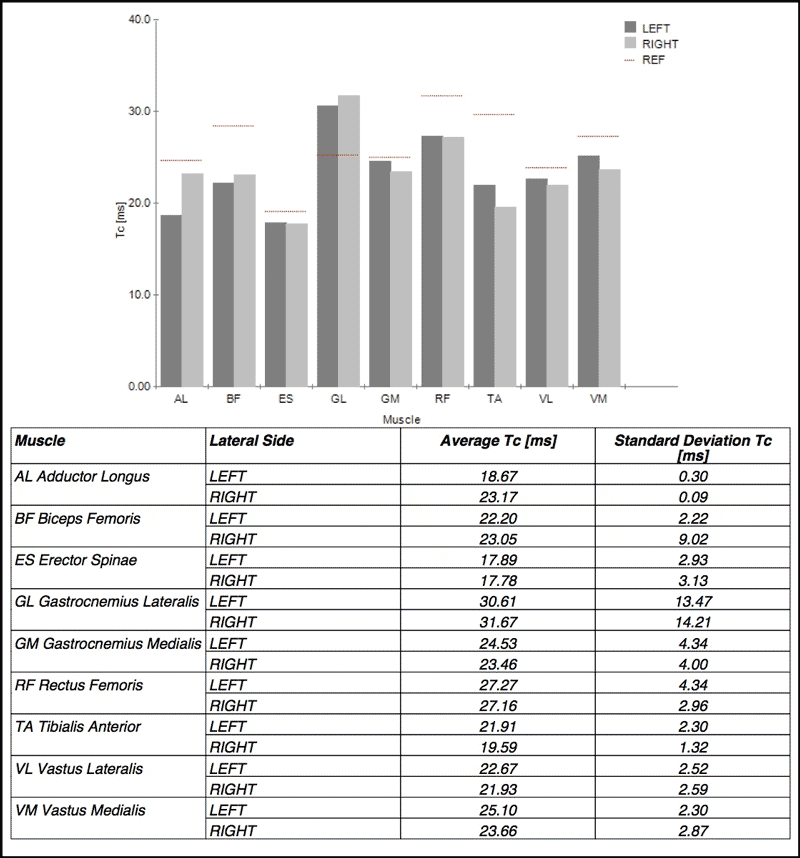
Figure 10: Team Contraction Times
I’m Interested, How Can I Get Involved?
Knowledge is power, bridging the gap between application and reliability makes Tensiomyography a powerful tool for coaches and trainers in North America. If you are interested in using Tensiomyography with your team or organization and exploring a business relationship as an affiliate or if you are interested in exploring a business relationship including promotion, sales and marketing of TMG Body Evolution, contact [email protected]
To keep updated on the progress of the technology, TMG North America can be followed at any of the following Social Media accounts: Twitter, and Facebook.
Please share this article so others may benefit.
[mashshare]


The e-mail address [email protected] did not work